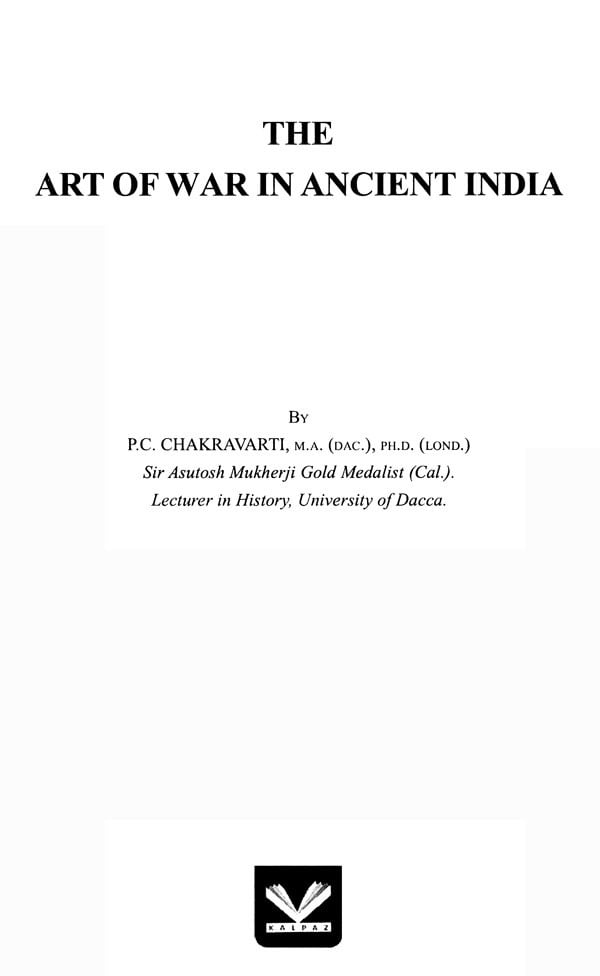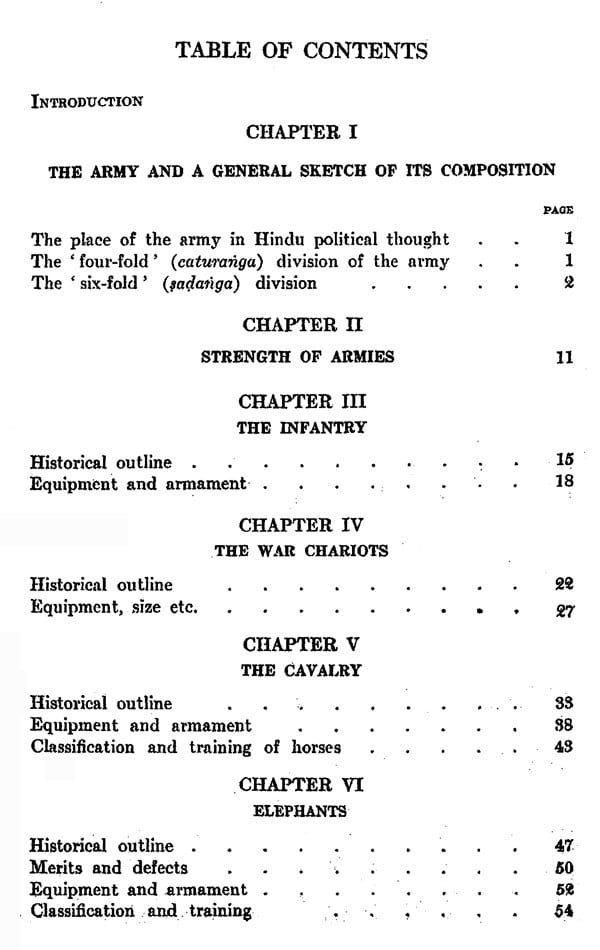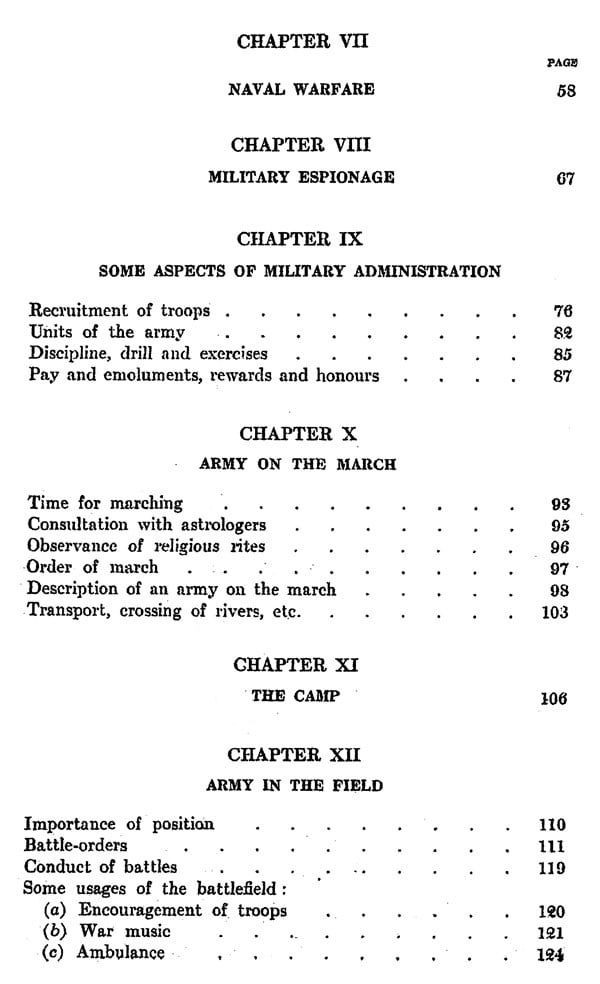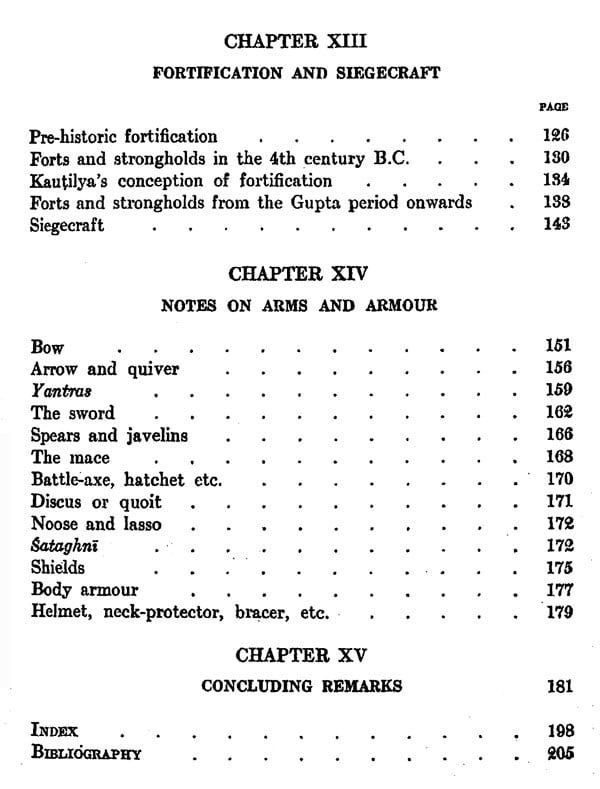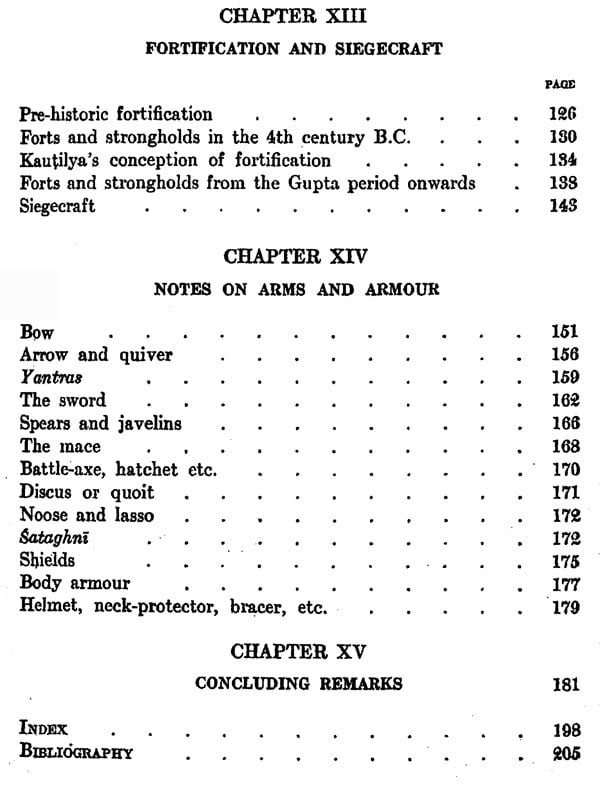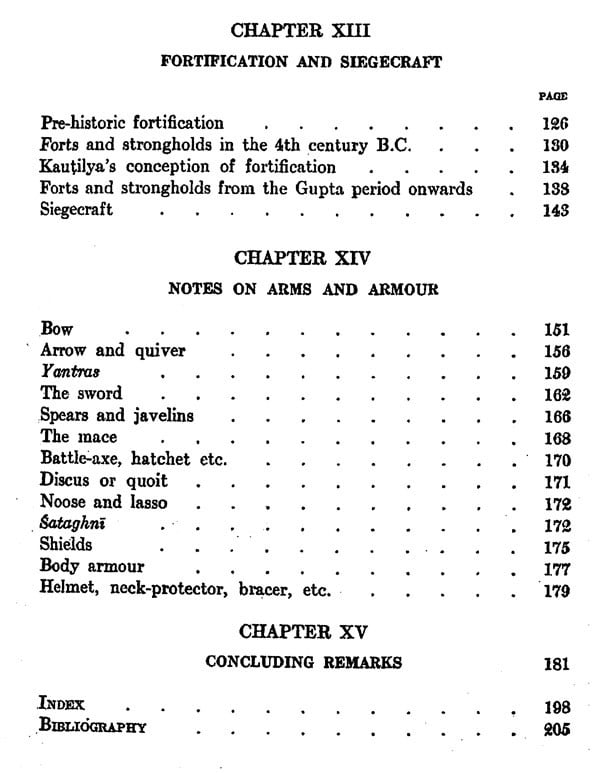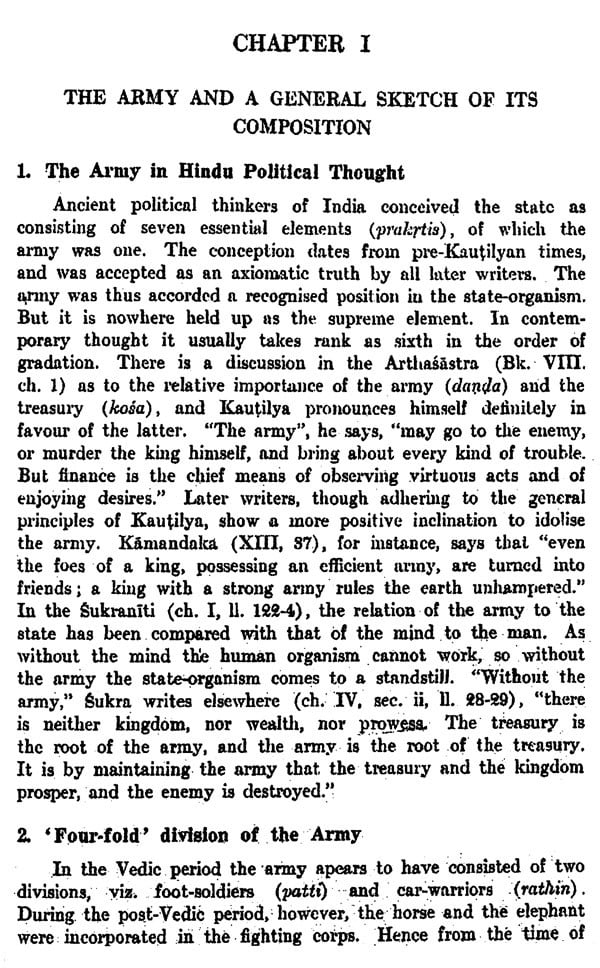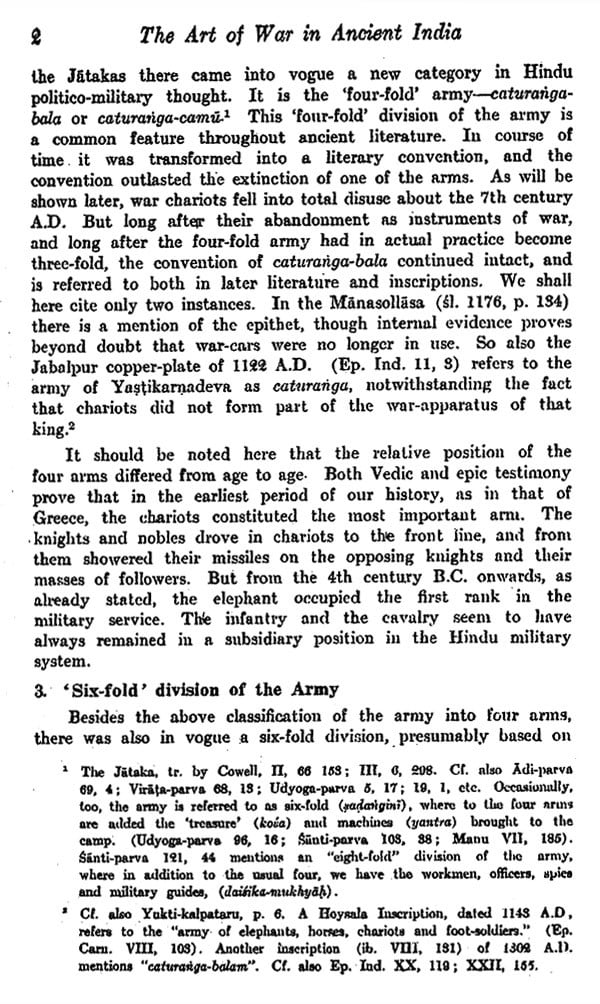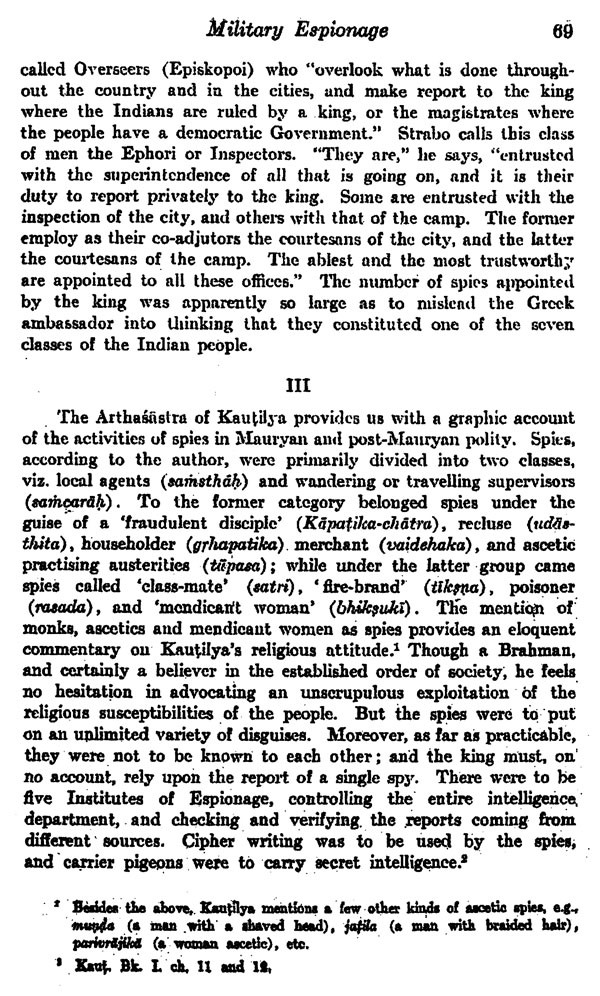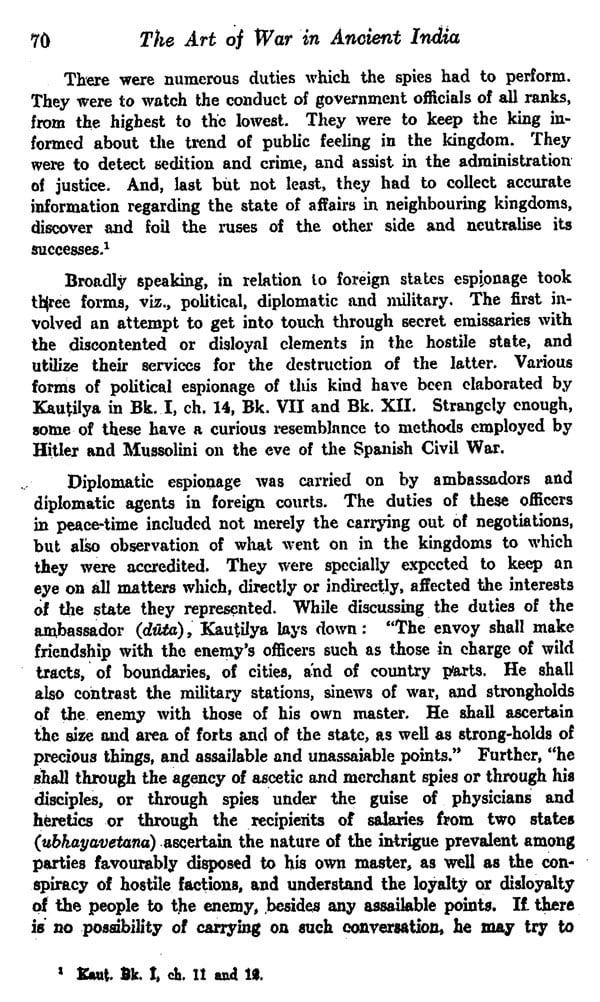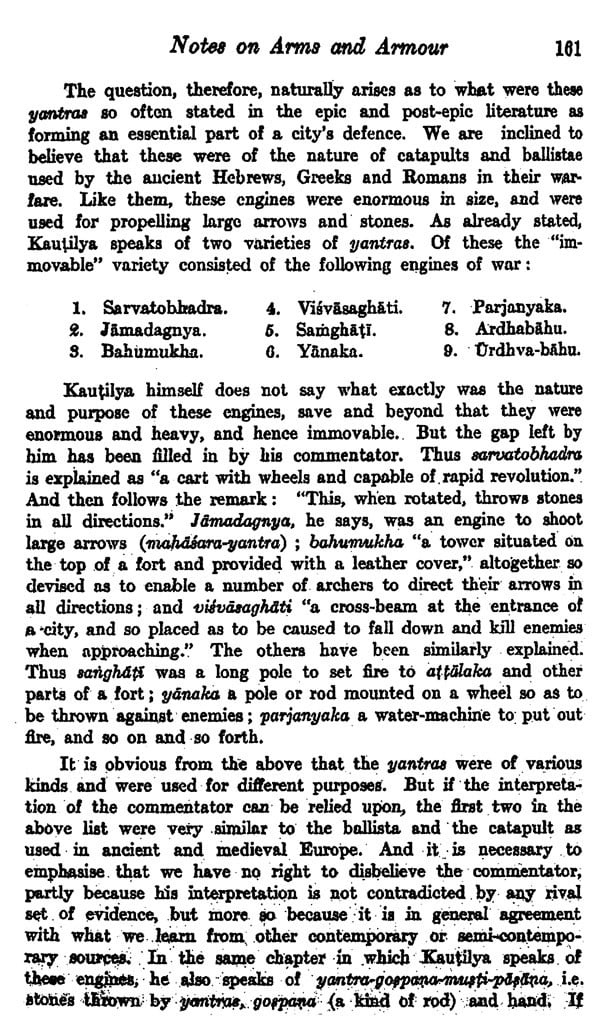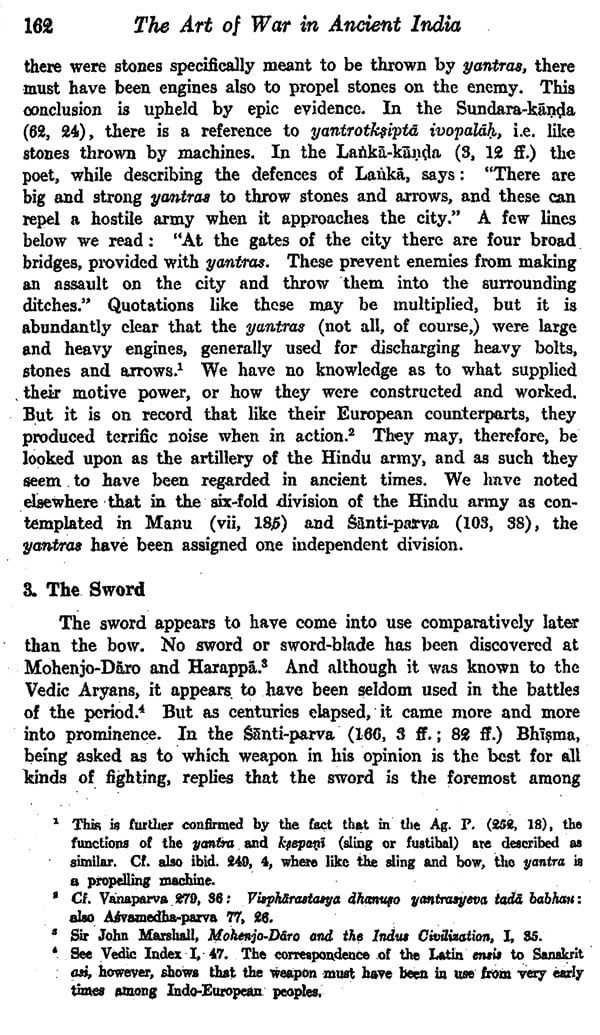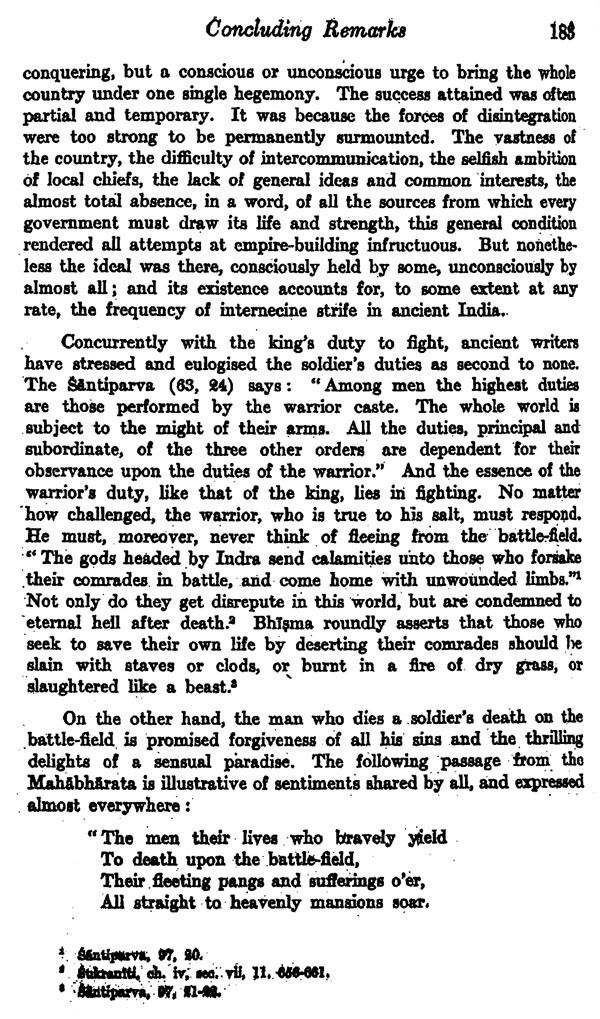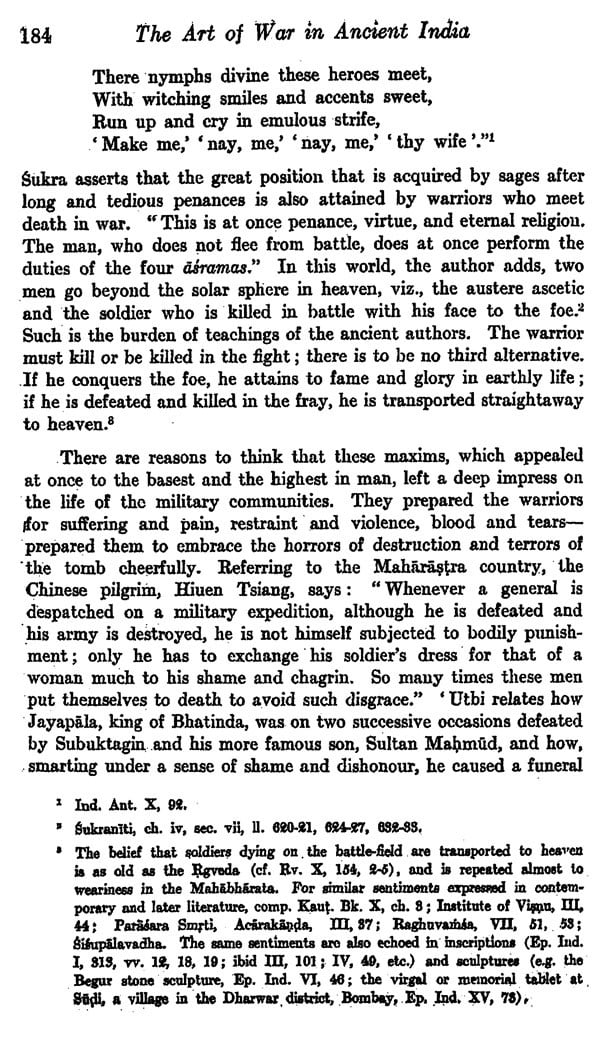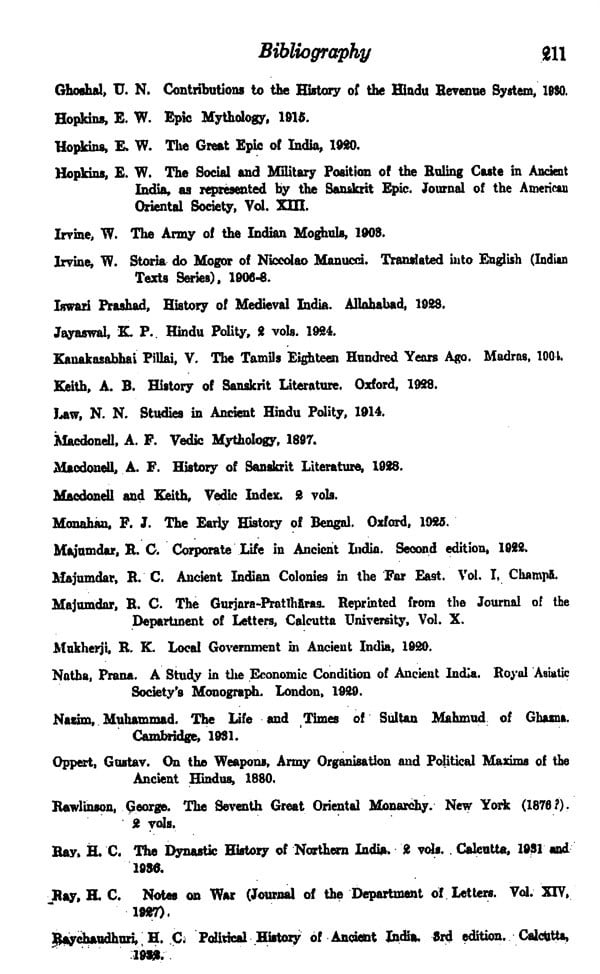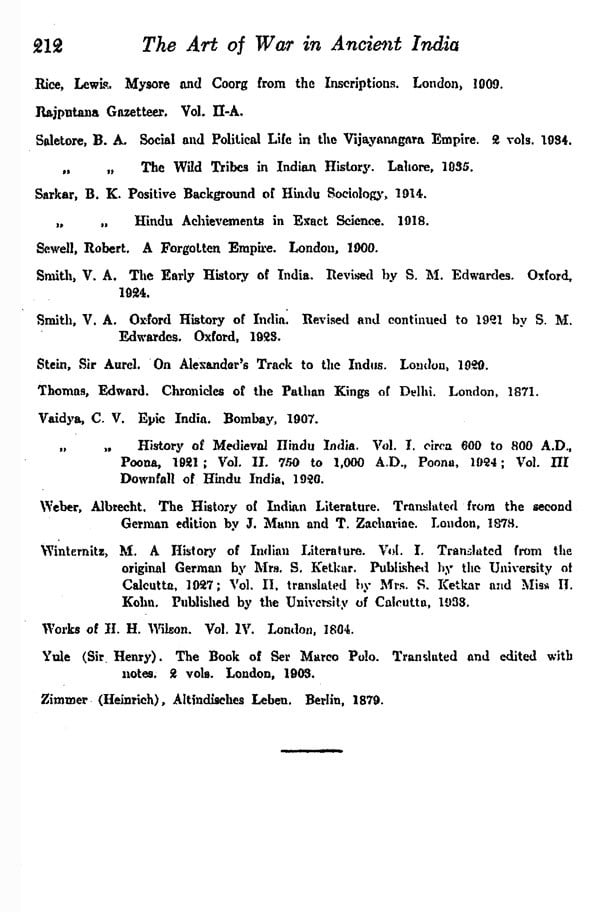
The Art of War in Ancient India
Book Specification
| Item Code: | UBC589 |
| Author: | P.C. Chakravarti |
| Publisher: | Kalpaz Publications |
| Language: | English |
| Edition: | 2017 |
| ISBN: | 9789351285403 |
| Pages: | 236 |
| Cover: | PAPERBACK |
| Other Details | 8.50 X 5.50 inch |
| Weight | 280 gm |
Book Description
Strictly speaking, this is not a pioneer work. Others have laboured in the same field, the most notable among them being E. W. Hopkins, H. C. Ray and G. T. Date. Hopkins' article in particular on the Social and Military Position of the Ruling Caste, published in the Journal of the American Oriental Society, 1888, will ever remain a monument of critical scholarship. I have sometimes drawn upon his work, in so far as the Epic materials are concerned; but I have also covered fresh ground and arrived at conclusions which are not always in conformity with his. Mr. Date's essay bears the same title as mine, but we differ as widely in method and approach as in the range of materials utilized.
With regard to the spelling of names and the use of diacritical marks, I am afraid I have not been consistent all through.
India was no exception to this general rule. From the days of King Divodasa in the Rgveda till the closing years of the twelfth century, when the Turkish tempest swept down upon the plains of northern India, the country passed through an endless series of battles, wars and revolutions. Kingdoms rose and fell in never- ending succession. Mighty conquerors sped across the land from one end to another in search of wealth, territory, glory and adventure. Dig-vijaya (conquest of regions) was held up as s righteous ideal, and empires were built up through the same mechanism of bloody strife and diplomacy as the later-day empires of the Moghuls, the Marathas and the British. From the 5th century B.C. onwards there were periodical incursions of foreign adventurers and migratory and countless wars and battles were fought to keep them at bay. Porus and Chandragupta, Pusyamitra and Skandagupta, Anandapala and Prthviraja-these are but a few of those valiant generals, who, like Aetius and Charles Martel in Europe, stood athwart the path of alien invaders and fought in defence of their country and religion. did not always bless their efforts with success, but the goddess of battle found in them votaries of unbending courage and determination.
Yet such names as these, of whom any country in the world might legitimately feel proud, would have been completely lost in oblivion but for the records of foreign historians and the happy discovery of a few epigraphic records in India. It is a well-known fact that ancient India, in spite of its multifarious literary activities, produced no historical literature worth the name. Until almost the close of our period, the muse of history remained immutably mute.
**Contents and Sample Pages**
